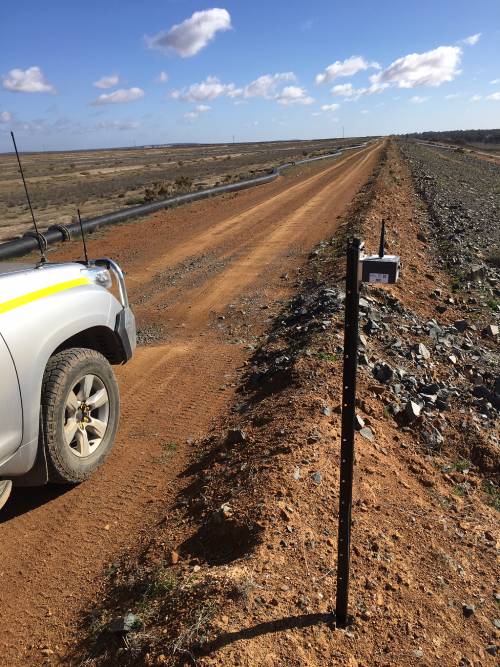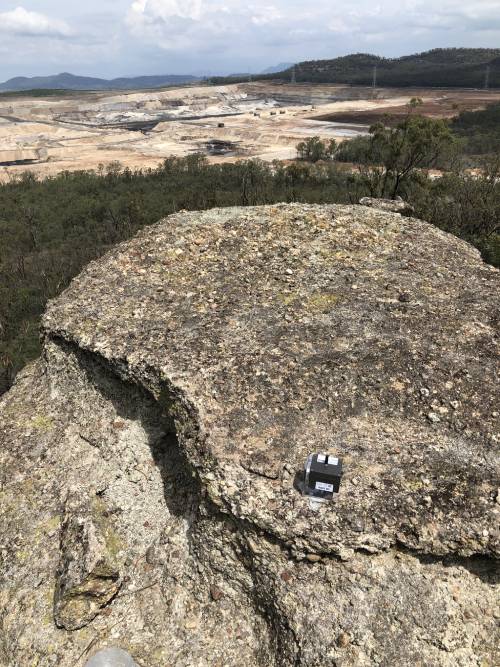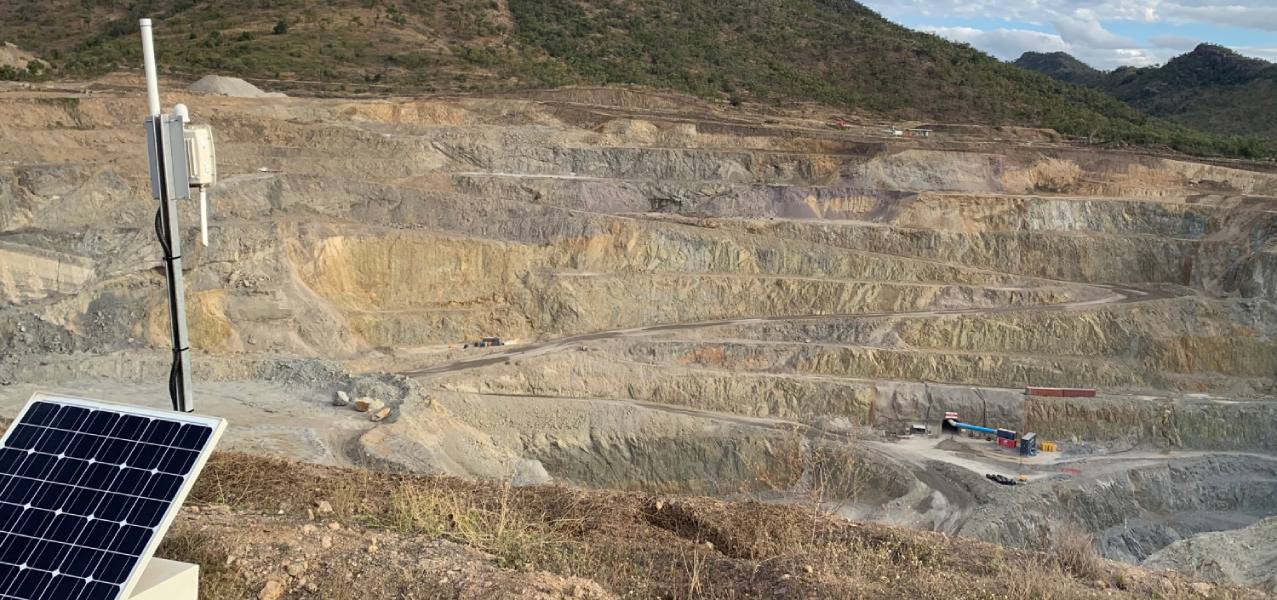The Problem in mine site monitoring
Mine site monitoring has typically been divided into two phases of activity: collection and analysis. With production pressures on site and staff increasingly becoming more time poor, data is collected often at the expense of the analysis. Or more frustratingly, the data has been diligently curated by surveyors and technicians into a variety of packages and then slowly accrues digital dust as geotechnical and mining engineers do not have the time to review it. In my time as a mine geologist, I can confess to collating multiple spreadsheets storing a myriad of surveying and geotechnical data. During this time I recall cajoling surveyors into measuring control points and bribing geotechnicians to download from data loggers. Other times I would drive to a far-flung edge of the underground mine to visually check a glass slide cemented across a crack, with the only way to inspect it was to stand under the hazard.
Since then, telemetry has improved and some geotechnical instruments have adapted to being read remotely. However, many sites have legacy systems and safety cultures have outpaced the rate of technological advance. Monitoring standards are often still written on the assumption that decades-old technology will be used to meet them. Yes, an autonomous total station will still do a fine job of measuring a number of prisms but still involves moving parts that will be time-constrained. Furthermore, lasers still can’t see around corners and can be easily dust and heat affected.
Furthermore, as the mine site grows, surveying crews are inevitably placed under more operational pressure and routine monitoring tasks can be at risk of falling by the wayside.
It’s time for revolution, not evolution.

The Solution
As stated earlier, telemetry reporting is not particularly new technology. The wireless, low powered, cloud-based, long range systems provided by Senceive are considerably more innovative, particularly when all that is generally needed for installation is a socket set. The communication occurs between a sensor node and a gateway in either a star or mesh topology, depending primarily on the density of the sensor nodes and the distance back to the gateway.
So basically….
A sensor node can undertake a variety of functions. The most common sensor for mine site monitoring is a triaxial tilt sensor that can be mounted in a variety of different ways. A stake is the most common for permanent installations on tailings dams and earth embankments. The stake is driven into the ground and the tilt is automatically factored by the installed length of the stake to calculate the horizontal displacement across and along the embankment. Either stakes or concrete bollards can be used on benches with similar calculations performed as previously described. As the sensor lies dormant in between observations, the battery life can be more than ten years. As such, they can be left in place without any maintenance required.
…. But also
Other sensor nodes can measure displacement across small discontinuities or over longer zones. This is done with a crack sensor node with an external bicycle pump-style potentiometric sensor for short distances of less than 300 millimetres or with a laser displacement sensor that measure up to 100 meters.
And then….
The measurements are wirelessly transmitted to the gateway for transfer to the cloud-based WebMonitor platform to be charted and analysed. Observations are typically taken every thirty minutes and include an ambient air temperature sensor and battery level. Understanding short and long term trends are benefited by thirty-minute observations coupled with air temperature readings such that daily cyclical fluctuations are highly correlated with changes in temperature.
Once in the WebMonitor, the data can be compared to a matrix of thresholds and alerts to notify supervisors of an immediate area of risk, dispatch teams to further communicate the risk, technical personnel for inspection and management team for decision making.

But what if?
Some geotechnical settings do not lend themselves to drift and trend. Hard rock failures are typically brittle, not ductile and unconsolidated fill may fail rapidly when super-saturated. What happens if something moves in between an observation period? Senceive’s sensors have Network Intelligence functionality which encompass a series of features designed to not only detect movement in between scheduled observations but increase the frequency of observations based on a pre-determined reporting criteria.
Furthermore, if a node exceeds severity threshold, it will notify the gateway and all nodes in the network will be asked to take a sample. This will assist in analysing the reading from the alerting sensor by providing some context from the rest of the monitoring network. Simultaneously, the data will be uploaded to the WebMonitor so that alerts can be expedited immediately, not just when the gateway is next scheduled to upload data.
What else?
Several key geotechnical instruments have been available for a long period of time. Some of the underlying technology has remained unchanged from the 1930s when a piano wire was used to first measure strain. Now, vibrating wire principles have been replicated in piezometers, strain gauges, extensometers and load cells. Even older still, the Wheatstone Bridge, the foundation from which strain gauges were built, were developed almost 100 years earlier still. Both vibrating wire and electrical resistance technologies can be read with sensors developed by Senceive and can connect via the same communications infrastructure provided by the gateway.
The in-place inclinometer (IPI) has been a part of the geotechnical engineer’s repertoire for some time since they were developed in the 1970s. Consisting of a series of inclinometers, the string of instrumentation would be winched down a borehole, with each sensor logged for their depth and then oriented into their desired position. The system would then be either read via a manually connected data logger, via a wired data logger or telemetrically reporting to a local server.
Senceive has revolutionised the IPI string to a simple set of carbon fibre rods, the FlexiMeasure. This system can be connected on site and lowered into a borehole by hand. Each rod contains a tilt sensor that will measure the deflection within the hole as the ground deforms accordingly. Differing lengths of rods can be connected to match the downhole characteristics and once connected, will automatically register in sequence. Once the triaxial tilt sensor is baselined electronically, the system will begin monitoring and reporting to the WebMonitor. When required, the system can be extracted and reused again. Where this system shows great versatility is that it can not only be installed down boreholes in any orientation, including horizontal, it can also be installed externally to structures.

What else apart from the mine itself?
Aptella has assisted with the mine site monitoring of over 1,000 points on mine sites around Australia. These points have distributed between tailings dams, open pits, underground mines, fixed plant and assorted geotechnical issues peripheral to the mining area.
The volume of tailings release due to dam failure has been trending upwards since the 1970s with quantities of material released reaching an average of over three million cubic meters per failure since 2010. Whilst total numbers of dam failures have generally fallen from the 1960s, as mine sites have grown in scale, due to the mechanisation of more processes and the increased capacity of equipment, the scale of the failure has steadily increased.
Consequently, the need for monitoring of tailings storage facilities has become more important to prevent downstream loss of life, ecological disaster and operational disruption. Monitoring plans are invariably required by mining regulators as part of their licence to operate and environmental bonds are sized according to a mine’s monitoring system.
Tailings dams are inevitably the largest “legacy” structure remaining onsite post-mine closure. Dam wall construction has varied over time and as mines expand production or extend their mine life, dam walls are required to be raised to increase their storage capacity. The Brumadinho dam wall, which failed recently in Brazil, was constructed using the “upstream method” by which approximately half of the 3,500 dams worldwide are constructed.
A mine will almost never know the size of its resource at the time of its construction. Typically, the site will calculate a reserve that meets the requirements of bankable feasibility study with a lower confidence resource that may be converted during the mine life. As the mine life is extended, fixed plant becomes more aged and will inevitably exceed its design life. Crushers and conveyors are key pieces of infrastructure that operate with high utility and duty cycles. They are key components of the processing system and rarely have redundancy if they were to break down.
Do I have ‘platform fatigue’?
Possibly. With so many brands of geotechnical instrumentation, the likelihood is that many platforms will be running on a site reporting to different packages. The time component in switching from different programs as well as managing different data streams is not inconsiderable. The Senceive WebMonitor can receive data from many different brands of instruments once connected to one of their many sensor nodes. Alternatively, the Senceive data can be streamed via either an FTP or API into another package.
Finally
There is no one single way todo mine site monitoring. Autonomous total stations, scanners and radars will all have a role to fill for the right environment. Commonalities to look for with instrumenting any monitoring program should include autonomy, low power and be simple to use. Effort is better spent interpreting data than collecting it and alerting should feed into the site’s response plan whereby manual checks are performed by exception, not by routine.

We source, deploy and support intelligent positioning solutions to enhance our customers’ productivity.
Aptella Pty Ltd
ABN 56 130 367 065
2024 Aptella Pty Ltd | ABN 56 130 367 065 | Terms and Conditions | Privacy Policy